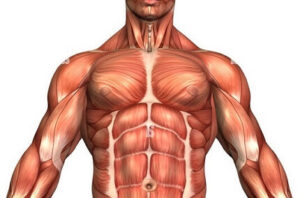Back to: Physical Health Education SS2
Welcome to today’s class!!
We are thrilled to have you in our class!!
In today’s Physical and Health Education class, we will be learning about Muscles in Physical Education
Muscles in Physical Education

One of the shocking things you get to find out in today’s class is that you have more than 600 muscles in your body. Interestingly, some muscles help you move, lift or sit still. Others help you digest food, breathe or see. Your heart is a muscle that pumps blood through your body. Many injuries and diseases can affect how the muscles work. To keep your muscles strong, maintain a healthy weight, eat right and exercise regularly.
Muscles are soft tissues. Many stretchy fibers make up your muscles. You have more than 600 muscles in your body. Different types of muscles have different jobs. Some muscles help you run, jump or perform delicate tasks like threading a needle. Other muscles allow you to breathe or digest food. Your heart is a hard-working muscle that beats thousands of times a day.
Many disorders, injuries and diseases can affect how muscles work. These conditions can cause muscle pain, muscle spasms or muscle weakness.
According to the doctors, more severe disorders can lead to paralysis. Such as cardiomyopathy and other kinds of heart disease which make it difficult for the heart to pump blood through the body.
Muscles in Physical Education
All types of muscle tissue look similar. But there are slight differences in their appearance:
- Skeletal Muscles: Many individual fibers make up skeletal muscles. Actin and myosin are proteins that make up the fibers. The bundles of fibers form a spindle shape (long and straight with tapered ends). A membrane surrounds each spindle. Providers describe skeletal muscles as striated (striped) because of the striped pattern the spindles create together.
- Cardiac Muscles: These striated muscles look similar to skeletal muscles. Special cells called cardiomyocytes make up the fibers in cardiac muscles. Cardiomyocytes help your heart beat.
- Smooth Muscles: The proteins actin and myosin also make up smooth muscle fibers. In skeletal muscles, these proteins come together to form a spindle shape. In smooth muscles, these proteins appear in sheets. The sheets give this muscle tissue a smooth appearance. You have all sizes of muscles in your body. The largest muscle is the gluteus maximus (the muscle that makes up your bottom). The smallest muscle is the stapedius, which is deep inside your ear. This tiny muscle helps you hear by controlling the vibration and movement of small bones in your ear.
In summary, Muscles are soft tissues. Many stretchy fibers make up the muscles. We have more than 600 muscles in our bodies. Different types of muscles have different jobs.
Evaluation
What are Muscles?
Reading Assignment
How many Muscles are there in the human body?
Weekend Assignment
Explain any three types of Muscles
We hope you enjoyed today’s class. In our next class, we will be talking about Muscles II.
Let us know your thoughts and questions in the comment section, and we will attend to them as fast as we can.
